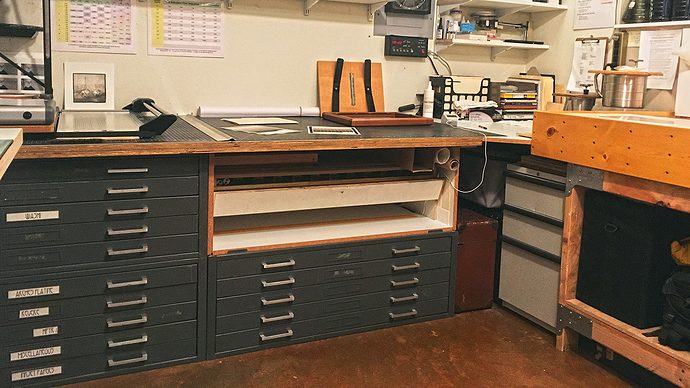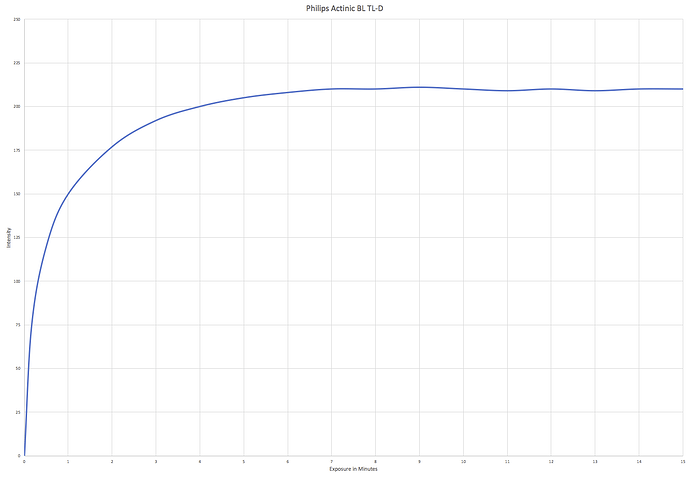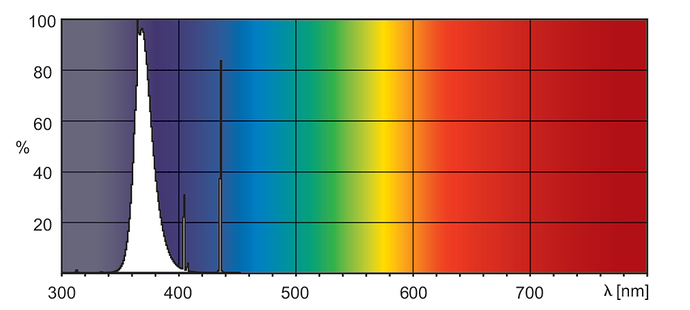I’ve been using a Light Measure PPM-2 UV meter in my darkroom for about a year now. At first, because it is only a meter (it measures UV dosage but does not turn the light on and off), I figured it would be most useful for calibrating (characterizing, profiling, &c.) rather than for actually “timing” my exposures. But recently I have found it to be less of a nuisance to use it as an exposure timer than I had anticipated even though it means turning the light (which is still hooked up to a timer) on and off manually. Ian Parker of Light Measure is rumored to be working on a prototype that will have switching capability. It will be connected to the light source and allow setting a predetermined dosage much like setting the time on an enlarging timer or units on an integrator. Ian Leake in Switzerland has already been making and selling a modular system that does this and more, and that has a sensor range that may actually be more suitable for our purposes. Unfortunately it is more expensive.
But what I want to talk about here is something unexpected that I learned over the last couple of months as a result of having to replace the lamps in my fluorescent UV exposure unit. Hopefully it will be of use to others.
I built this “pizza oven” style unit to fit an open space in the flatfiles that serve as work surface base in my darkroom about 10 years ago. The bulbs, 22 hitachi F20T9/BL fluorescent tubes running front to back and spaced 1/2 inch apart, were also 10 years old last October or November when I noticed that a few of them seemed to be dimmer than the rest. Over a period of a couple weeks more started to fail. I decided to replace them (all 22) with the same bulbs, but when I tried to place an order I found they were out of stock at the one place that listed them as in stock and where I had bought them previously. This being a bad time to be without an exposure unit, I ended up choosing to replace them with Philips Actinic BL TL-D lamps which are an 1/8th of an inch smaller in diameter (T8 rather than T9) and were also less than half the price of the Hitachis. Because of the smaller diameter I could also fit 2 more bulbs in the available space.
Here’s where it gets interesting. Earlier in the fall I had run some tests to see how fast the Hitachi bulbs got to full output and how long it stayed there. The idea was to see how long of a warmup period would be necessary before an actual exposure to produce a predictable timed exposure result. I used the PPM-2 meter and noted the Intensity reading at 15 second intervals over a 10 minute range. I did this several times, then plotted the averaged results.
As you can see in the graph, maximum output is reached after about 1 minute, then it slowly diminishes as exposure continues. (Note: I extrapolated from 10-15 minutes to match the range of the next graph.)
I did a similar test with the new Philips bulbs, and found a significantly different intensity profile.
In this case, it took about 5 minutes to reach maximum intensity, but from there it is stable at an intensity of ~210 out to at least 15 minutes which covers the longest exposure I anticipate needing for any process that I do.
Both of these bulbs have similar spectral output profiles with peaks of 352nm for the Hitachis, and 365nm for the Philips. I have never found an output graph for the Hitachis, but here is one for the Philips:
Over the last couple of months since installing the new bulbs, I have kept track of exposure time even as I have been using the PPM-2 dosage to manage my exposures. What I have found is that for my typical exposure dosage of 4000 units (or lux used loosely), if I give the lamps a 5 minute warmup immediately before exposing the print, or more precisely if I let it warmup until the intensity is over 200, the time is always within 2 seconds of 3:15. This means I could actually use the timer without the PPM-2 meter as long as I gave the exposure unit a 5 minute warmup immediately before every exposure. Funny thing is I have now gotten used to manually turning the unit on and off while watching the dosage. It’s good to have options.
One more thing that may be of interest to users of metal halide plateburners with integrators. I have an old Olec AL-15 metal halide unit with AI-970 integrator, though it’s in storage and I haven’t used it in at least 5 years. The integrator connects to a sensor in the head, but I also have a couple of separate external sensors for it that would be used on the exposure plane. I wondered if this might work with my fluorescent unit. Unfortunately, neither of the sensors (an old PA-710 and a new PA-92) provided anything approaching consistent results. In fact, I couldn’t find a pattern to it at all. I have heard similar reports from a few NuArc users who have checked their integrator measured exposures against the PPM-2 measured dosage, so I don’t think it is an incompatibility between the integrator/sensor and the fluorescent exposure unit.
If you have ever tried to get a perfect linearization via multiple iterations of the PiezoDN linearization process, and found your results flip-flopping back and forth over the linear line, it is most likely due to exposure fluctuation than anything else. The use of a UV dosage meter like the PPM-2 goes a long way toward eliminating that particular variable.
Keith



